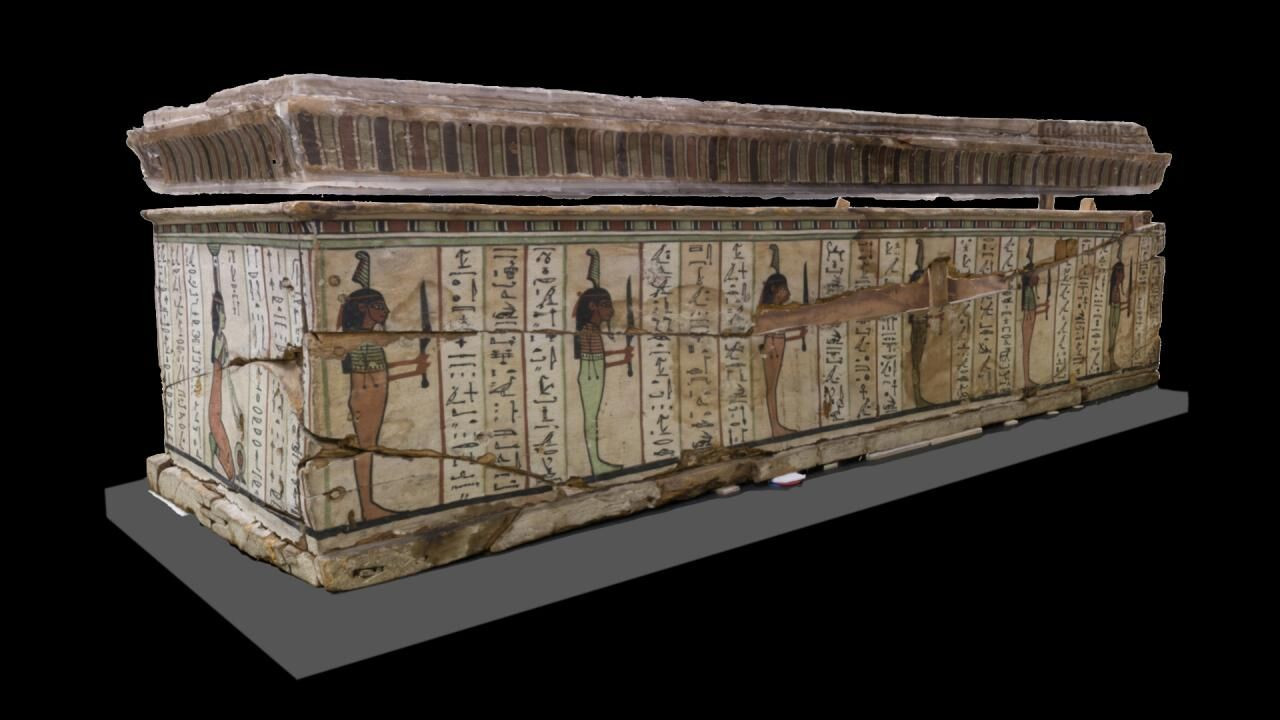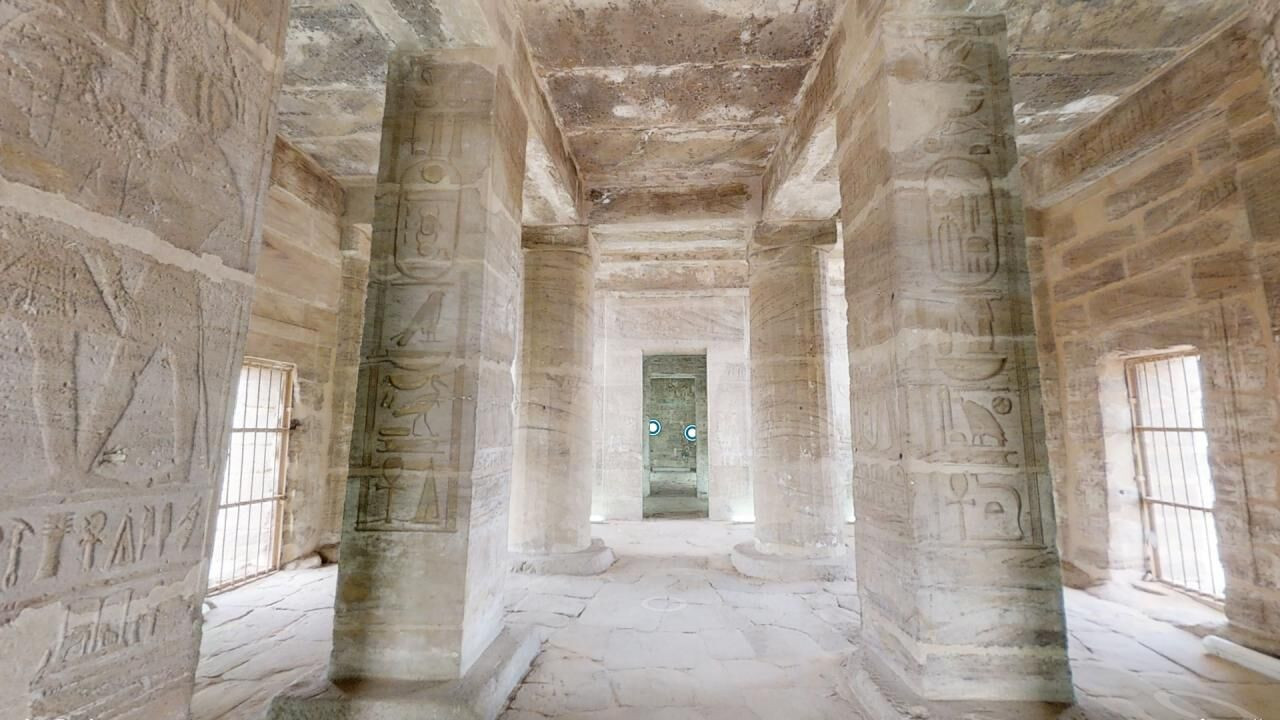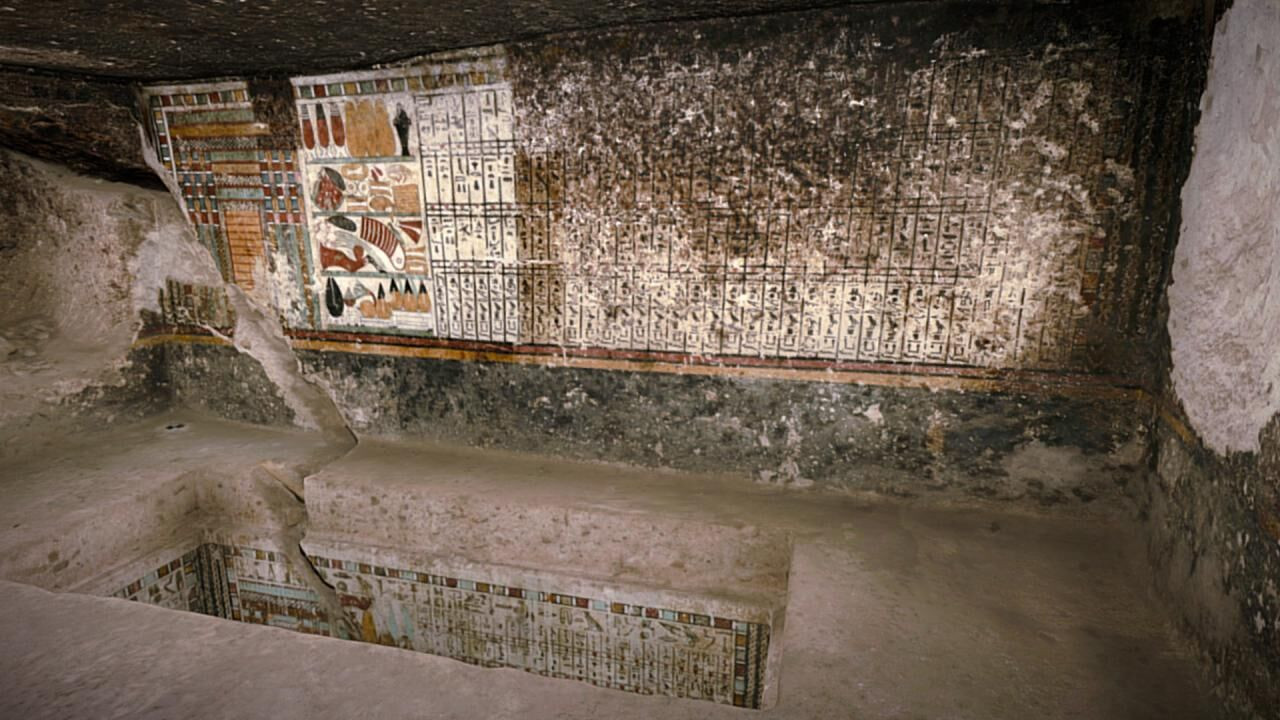A Virtual Tour of the Middle Kingdom Tomb of Khety (BH 17) at Beni Hassan
Creator Not Specified
Creator Not Specified
Beni Hassan is situated on the east bank of the river Nile, about 250 km south of Cairo. The necropolis of the town, dating to the 6th-12th Dynasties of the late Old Kingdom, First Intermediate Period and the Middle Kingdom, is cut into the limestone hills overlooking the river. The upper cemetery includes the rock-cut tombs of the provincial elite, while the lower cemetery, consisting of a series of shaft and pit tombs at the base of the cliffs, includes the tombs of the local officials.
The upper cemetery comprises 39 rock-cut tombs positioned in a north-south row on the upper cliffs. Between 1890 and 1892, Percy E. Newberry cleared and recorded most of them for the Archaeological Survey of Egypt. Many of the tombs still have almost completely intact scenes and inscriptions painted on their walls, retaining their original vibrant colors and intricate details. The murals feature some unusual motifs among the many traditional scenes of daily life and historical inscriptions. The best-known tombs of the site belong to Khety (BH17), see below, Baqet I (BH29) and Baqet III (BH15) dating to the 11th Dynasty, as well as Khnumhotep I (BH14), Khnumhotep II (BH3) and Amenemhat (BH2) dating to the early-mid 12th Dynasty of the Middle Kingdom.
Khety was a local governor of the Oryx Nome in Middle Egypt during the 12th Dynasty. His tomb is carved into the bedrock of the eastern cliffs at the upper cemetery of Beni Hassan. It consists of one large chamber with a slightly vaulted ceiling which was originally divided at the rear by two rows of columns. Of the six lotus stem columns only two is intact today. The walls of the tomb are decorated with vibrant murals showing scenes of fishing in the marshes, desert hunting, bird trapping, games played by young men and women, barbers at work, textile and wine making, agricultural activities and animal husbandry. The eastern wall facing the entrance is occupied by wrestling and war scenes.
The 3D virtual tour of the tomb is made available by the Egyptian Ministry of Tourism and Antiquities and is powered by Matterport. For more information on the Beni Hassan necropolis visit the Macquire University’s site overview here.
Back to Gallery




